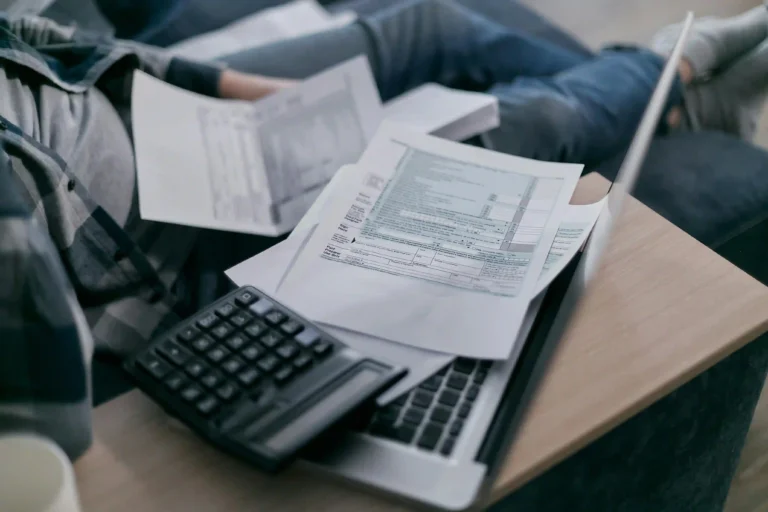
Avoiding double taxation is especially relevant for expats, freelancers, and those earning income across borders. With double taxation avoidance agreements (DTAAs), you can avoid overpaying when working internationally. The key is to determine your tax residency and understand which forms to submit in each country
Article Contents
- What Is Double Taxation
- Double Taxation Avoidance Treaties (DTAAs)
- How to Check Your Tax Residency
- Practical Methods to Avoid Double Taxation
- Personal Case Study on Using a Tax Treaty

What Is Double Taxation?
Double taxation occurs when the same income is taxed in two countries. This often affects people working remotely or operating businesses in multiple jurisdictions.
Why understanding this matters:
📌 Helps avoid overpaying taxes
📌 Simplifies paperwork for international transfers
📌 Protects from penalties due to incorrect filings
📌 Clarifies your tax residency status
Limitations:
⚠️ Requires clear understanding of tax laws
⚠️ Proving residency can be complex without proper documentation
Double Taxation Avoidance Treaties (DTAAs)
Double Taxation Avoidance Treaties (DTAAs) prevent individuals from being taxed twice — once in the source country and again in their country of residence. These treaties outline who has the right to tax various income types: salary, dividends, royalties, etc.
EU countries with DTAAs with Ukraine:
| EU Country | DTAA with Ukraine |
|---|---|
| Germany | ✅ Yes |
| Poland | ✅ Yes |
| Czech Republic | ✅ Yes |
| Slovakia | ✅ Yes |
| Lithuania | ✅ Yes |
| France | ✅ Yes |
| Netherlands | ✅ Yes |
| Spain | ✅ Yes |
| Italy | ✅ Yes |
📌 Full list available on the website of Ukraine’s Ministry of Finance.
Example for Ukrainian citizens:
Let’s say a Ukrainian citizen works remotely for a Polish company and resides in Poland for over 183 days. According to the DTAA between Ukraine and Poland, the tax should be paid in Poland. To avoid taxes in Ukraine, they must submit a Polish tax residency certificate to the Ukrainian tax office and apply the treaty provisions.
How to Check Your Tax Residency
Tax residency determines where you are obligated to pay taxes on your global income. Typically, it’s the country where you spend more than 183 days a year. However, other criteria may apply: marital status, housing, primary employment.
Example: Ukrainian tax status in the EU
If a Ukrainian moves to the Czech Republic under temporary protection, lives there for more than 183 days, works, and rents housing, they become a Czech tax resident. This allows them to use the double taxation agreement between Ukraine and the Czech Republic, avoiding double income tax.
Pros:
✅ Easier to claim tax benefits
✅ Legal basis to pay tax in one country
✅ Access to standard deductions in new country
Cons:
⚠️ Temporary status may require annual renewal
⚠️ Lack of tax residency may complicate tax declarations
Knowing your residency status is essential before using tax treaties.
Practical Methods to Avoid Double Taxation
Here’s what you can do to avoid double taxation:
✅ Submit the appropriate DTAA application form
✅ Keep documents confirming your tax residency
✅ Use foreign tax credits
✅ Claim exemption at the income payment stage
📊 Strategy Comparison Table:
| Method | Best For | Requires Docs? | Error Risk |
|---|---|---|---|
| DTAA Exemption | Salaries, royalties | Yes | Medium |
| Foreign Tax Credit | Investors, freelancers | Yes | Low |
| Changing Residency | Long-term emigrants | Yes | High |
Personal Case Study: Using a Tax Treaty
I used a tax treaty between the Czech Republic and Germany while investing through a European broker. The Czech Republic withheld tax at source, but thanks to the DTAA with Germany, I received a credit.
Why it worked:
📁 Filed residency certificate in advance
📁 Broker provided a tax withholding statement
📁 German tax office acknowledged the payment
⚠️ Important: The process took almost two months, so plan ahead when filing.
📌 Summary
Avoiding double taxation depends on tax residency and treaty availability.
DTAAs work — but require proper documentation and formal procedures.
Determining tax residency is a critical first step to knowing where and how much to pay.
Using foreign tax credits is one of the most reliable strategies.
Real-world cases show it’s possible — but preparation and attention to detail are essential.
❓ FAQ
What is a DTAA in simple terms?
It’s a treaty between countries to prevent taxing the same income twice. For example, if you live in one country but work in another.
How do I know where I’m a tax resident?
It depends on days spent in a country (usually 183+) and life ties — like family, housing, and work.
How do I apply a tax treaty in practice?
Submit the relevant form to the tax authority and confirm your residency status. Supporting documents are often required.
Can I avoid double taxation on dividends?
Yes, if there’s a treaty and your broker provides proof of tax withholding.
What if there’s no treaty between countries?
Use alternative methods: change residency, apply foreign tax credits, or structure income via another country (e.g., inside the EU).
📚 Related:
How to Move to the EU in 2025 — Full Relocation Guide
Sources:










